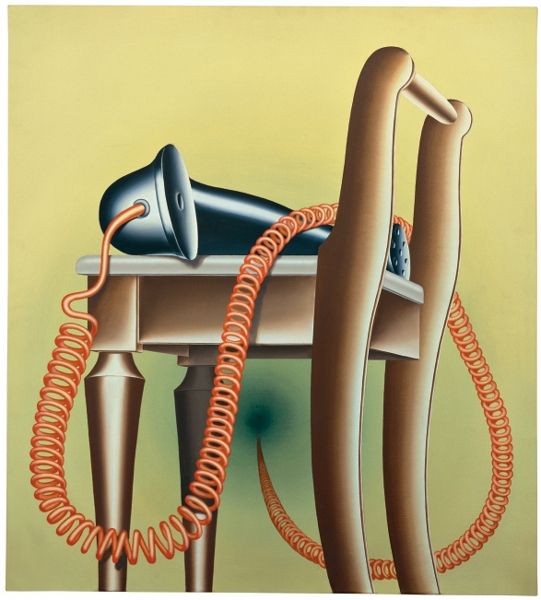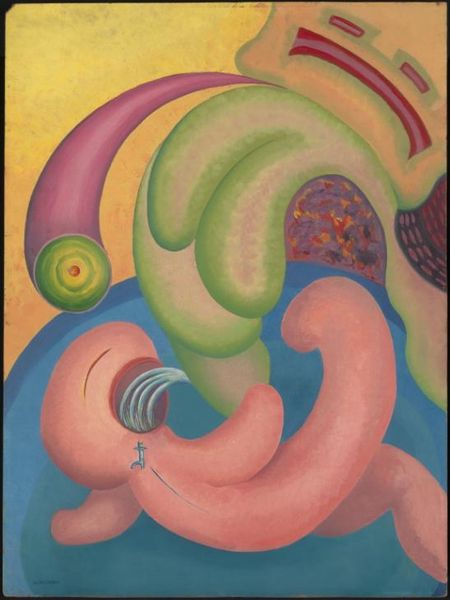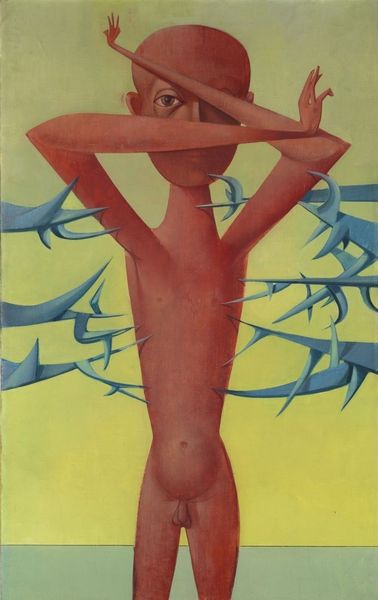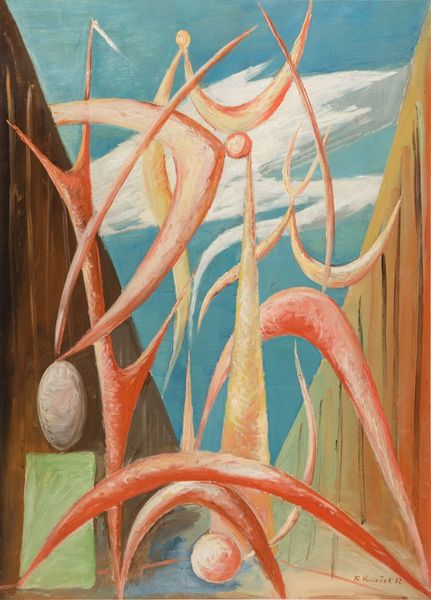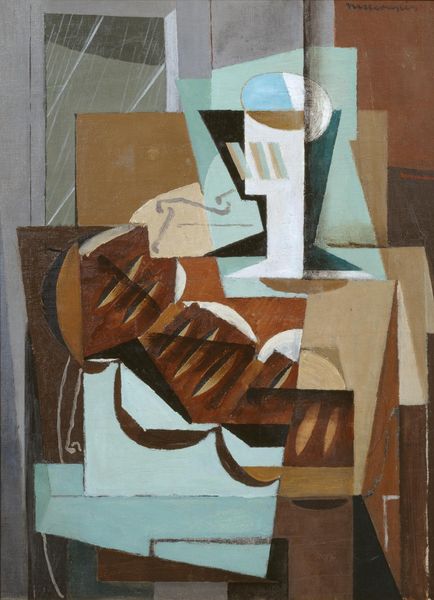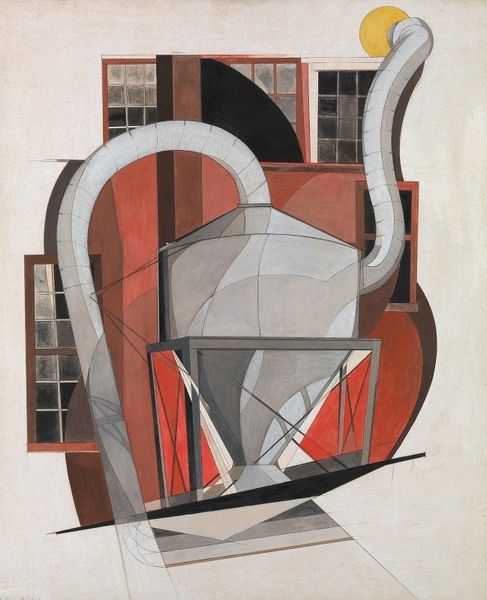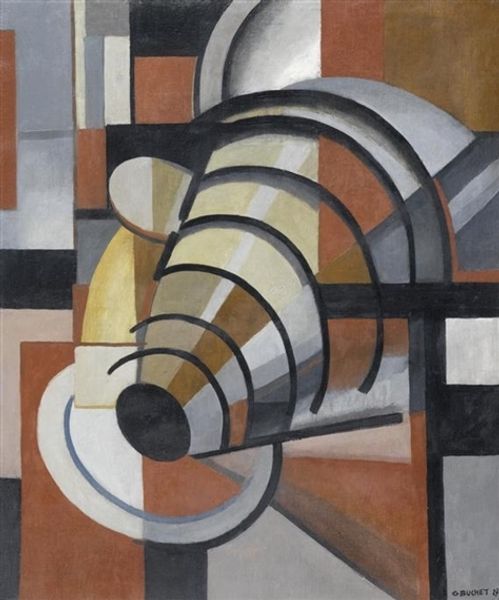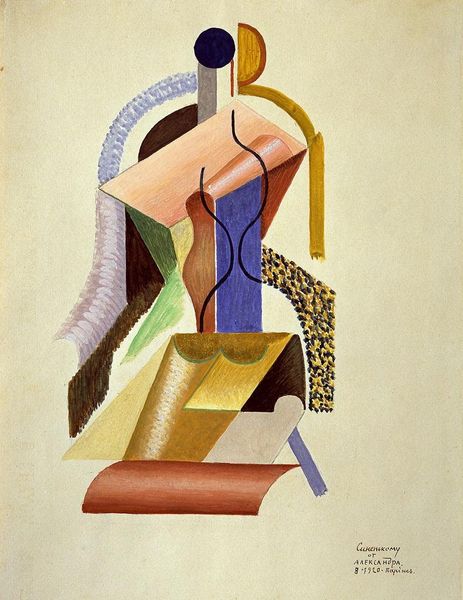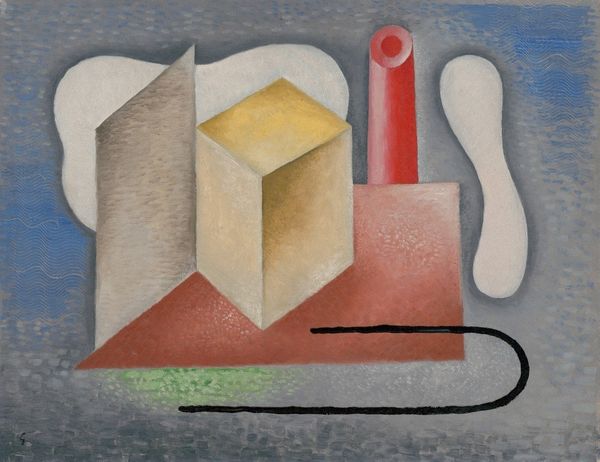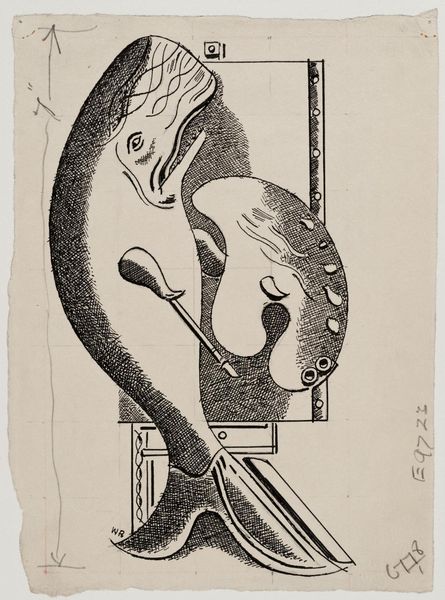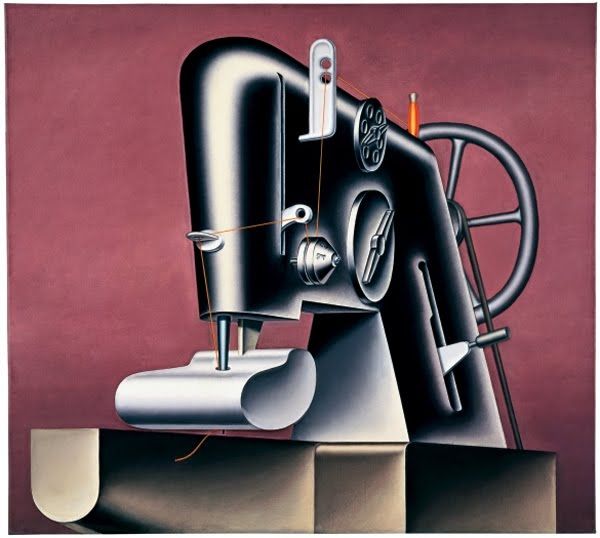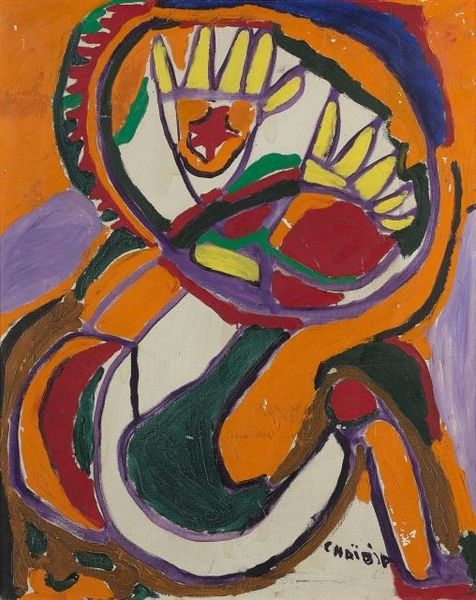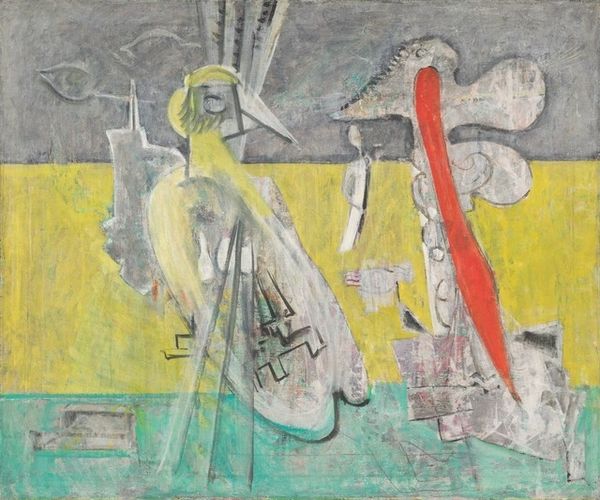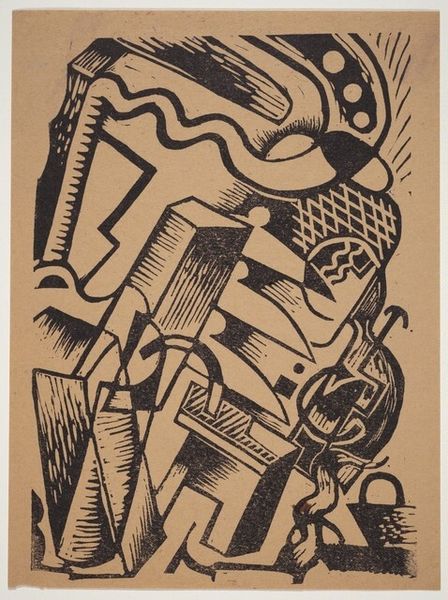
oil-paint
#
oil-paint
#
oil painting
#
geometric
#
geometric-abstraction
#
abstraction
#
modernism
#
watercolor
Copyright: Julius Bissier,Fair Use
Curator: Looking at Bissier's "Astrazione," crafted in 1930, my immediate feeling is one of whimsical unease. There's something playfully unsettling about the shapes and their muted color palette. Editor: For me, what strikes me first is the construction—the conscious layering and arrangement of form. We're talking about oil paint applied with intention here. Each brushstroke feels purposeful in its making. It's a physical record of Bissier's creative labour. Curator: Yes! It feels like peering into someone's slightly off-kilter dream, where familiar objects become alien and somewhat… well, orthopedic. Do you see what I mean? It’s like surrealist scaffolding for a body part I can't quite name. Editor: Orthopedic, I love that! It hints at a commentary on the mechanization of the body perhaps, and the constraints of early 20th-century industry. But consider, also, the materiality itself. The oil paint, that ubiquitous material of Western art, being used here to deconstruct familiar shapes. It challenges our ideas about high art. Curator: Absolutely! It subverts the expected. The geometric forms interact in ways that both attract and repel, creating a sort of visual friction. It's almost as if the artist is challenging the very notion of "natural" forms by abstracting them. Editor: And let’s not forget that in the context of its time—1930—this would've been a radical statement. An assertion that artistic meaning wasn’t limited to faithful representation, but existed within the manipulation of the medium itself. Curator: Which brings us back to the power of material, and how, despite its small scale, "Astrazione" really messes with perception and invites a really visceral response. It makes you wonder what’s being constructed or deconstructed, or both. Editor: It reminds us to really look at what something is made of, not just what it depicts. Fascinating.
Comments
No comments
Be the first to comment and join the conversation on the ultimate creative platform.
